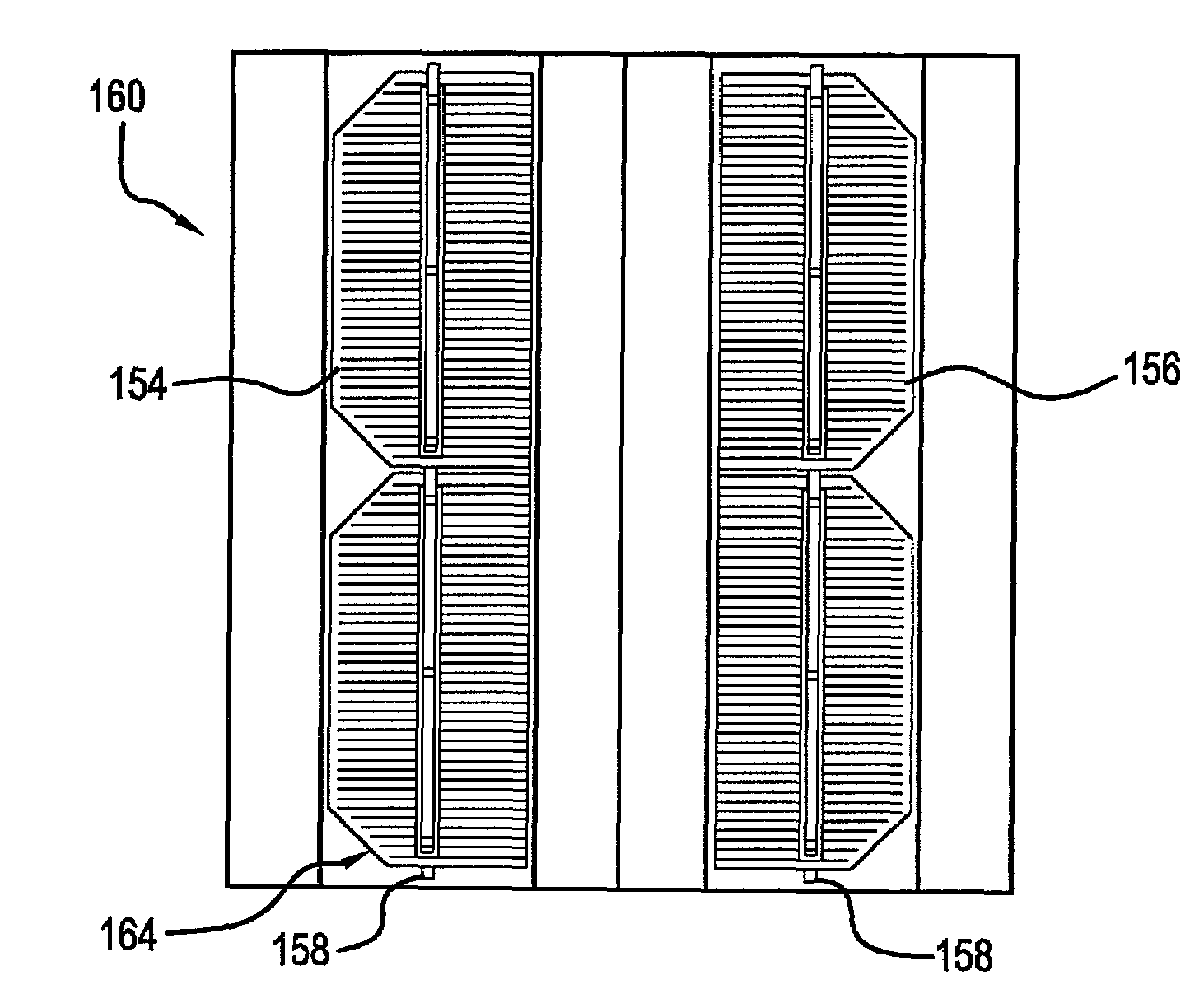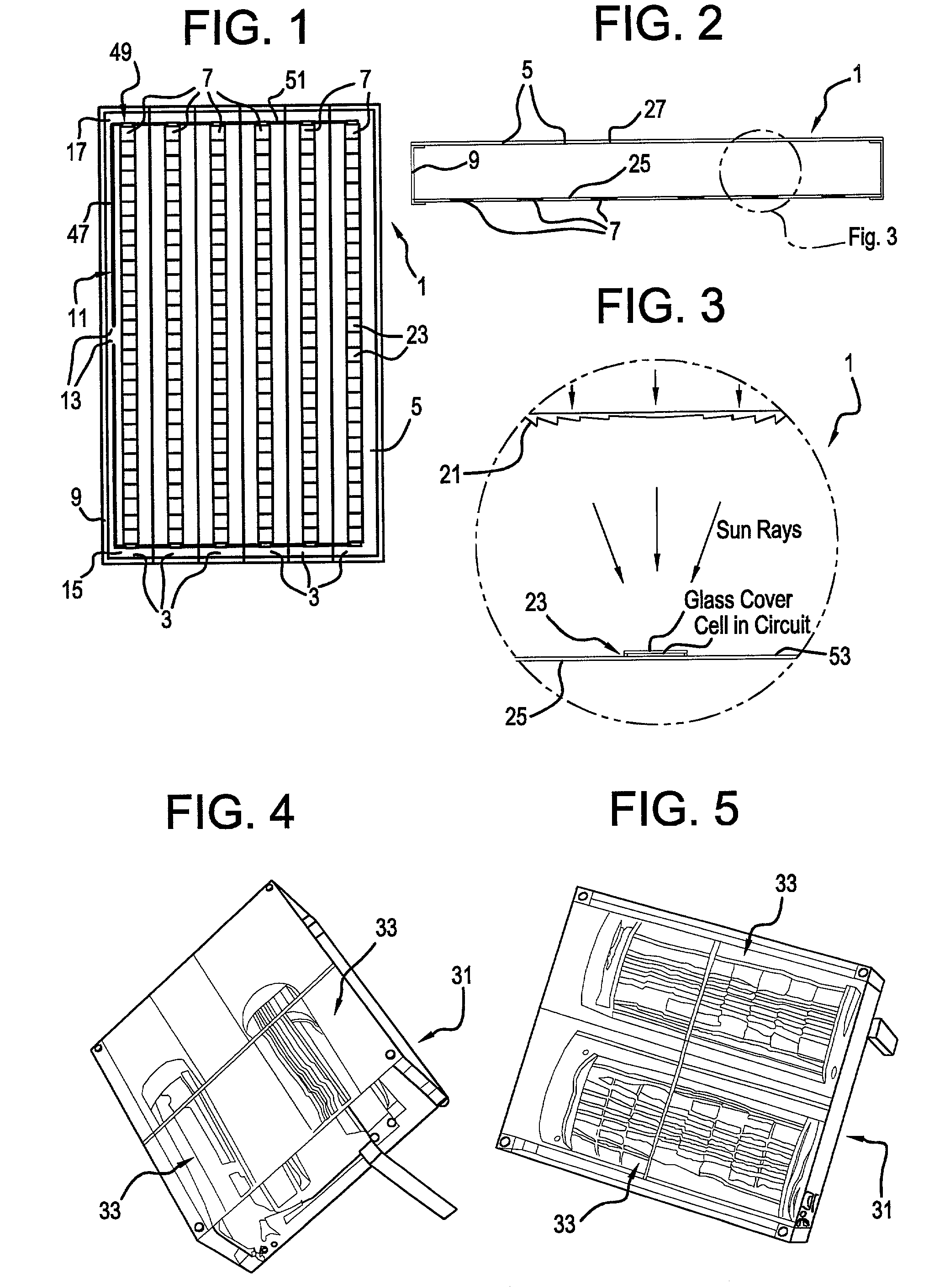Planar solar concentrator power module
a solar concentrator and power module technology, applied in solar heat systems, pv power plants, light and heating equipment, etc., can solve the problems of low cost thin film cells, high cost of silicon wafers, and high cost of solar cells to compete with electric power companies. , to achieve the effect of low cost, labor-intensive and easy handling
- Summary
- Abstract
- Description
- Claims
- Application Information
AI Technical Summary
Benefits of technology
Problems solved by technology
Method used
Image
Examples
Embodiment Construction
[0052]FIGS. 1, 2, 3, and 8 show a preferred planar concentrator solar power module 1. FIG. 1 shows a top view of the planar solar concentrator power module 1 of the present invention. An array 3 of linear Fresnel lenses 5 produces lines of focused solar radiation that fall on an aligned array of linear photovoltaic power circuits. FIG. 2 shows a cross section through the planar solar concentrator power module 1 of FIG. 1. The cross section is perpendicular to the focal lines produced by the lenses and perpendicular to the circuit length dimension. FIG. 3 shows a blow up section from FIG. 2 showing a single lens 21 and circuit element 23 in more detail.
[0053]The preferred unit depicted is exemplary with dimensions not limited to the following. For example, the preferred unit may measure 25″ by 40″ by 3.25″ deep. The size depicted is exemplary and is similar to 75 W planar modules manufactured by Siemens, Kyocera, and Solarex. All of these modules measure approximately 25″ by 40″ and ...
PUM
 Login to View More
Login to View More Abstract
Description
Claims
Application Information
 Login to View More
Login to View More - R&D
- Intellectual Property
- Life Sciences
- Materials
- Tech Scout
- Unparalleled Data Quality
- Higher Quality Content
- 60% Fewer Hallucinations
Browse by: Latest US Patents, China's latest patents, Technical Efficacy Thesaurus, Application Domain, Technology Topic, Popular Technical Reports.
© 2025 PatSnap. All rights reserved.Legal|Privacy policy|Modern Slavery Act Transparency Statement|Sitemap|About US| Contact US: help@patsnap.com



